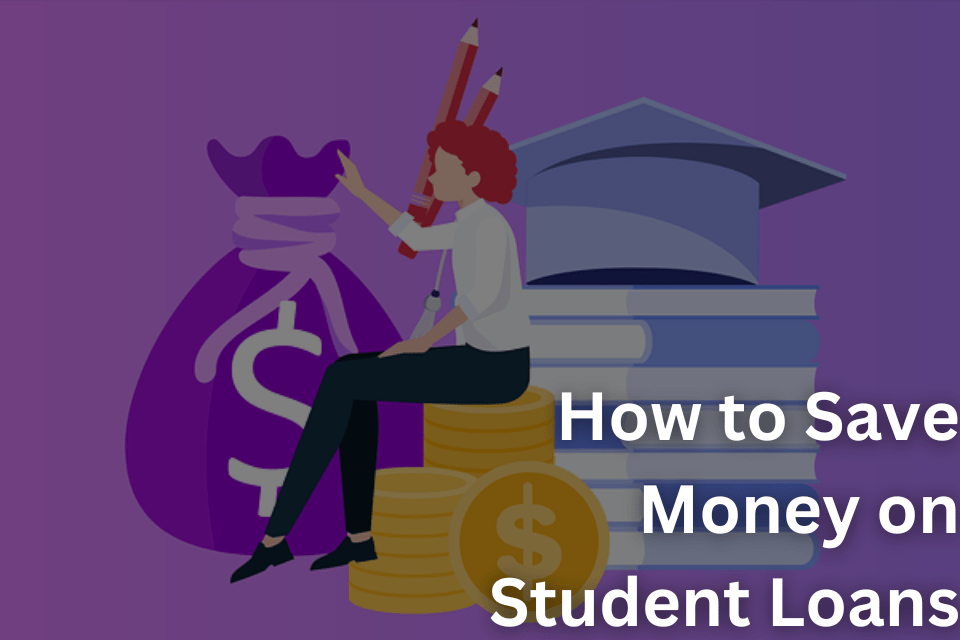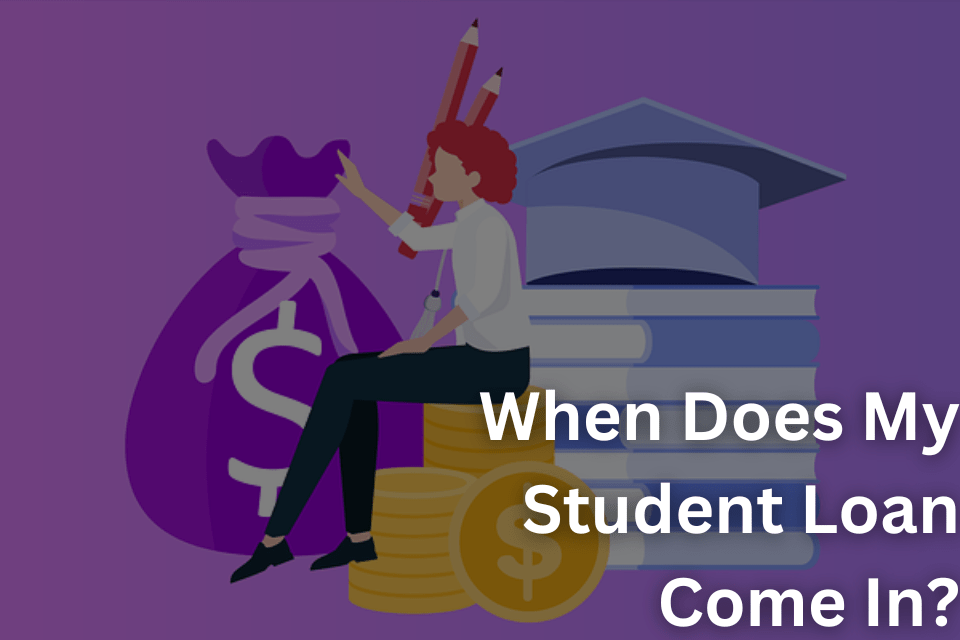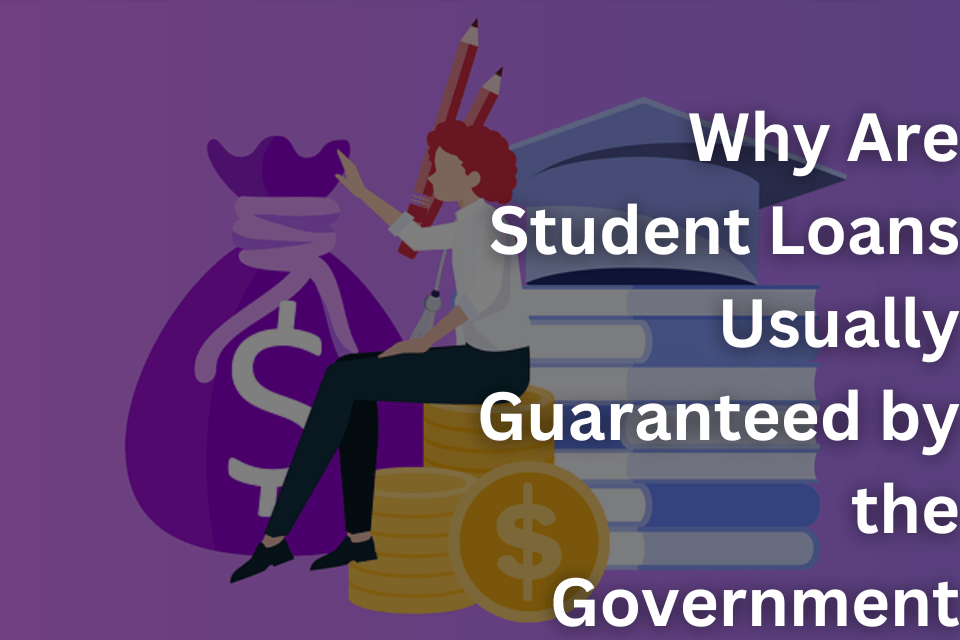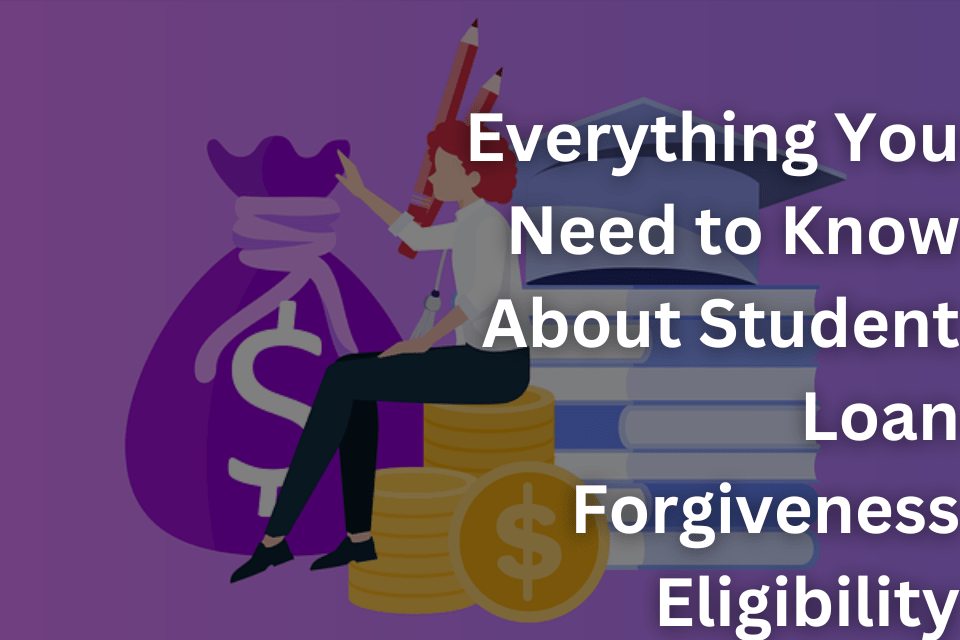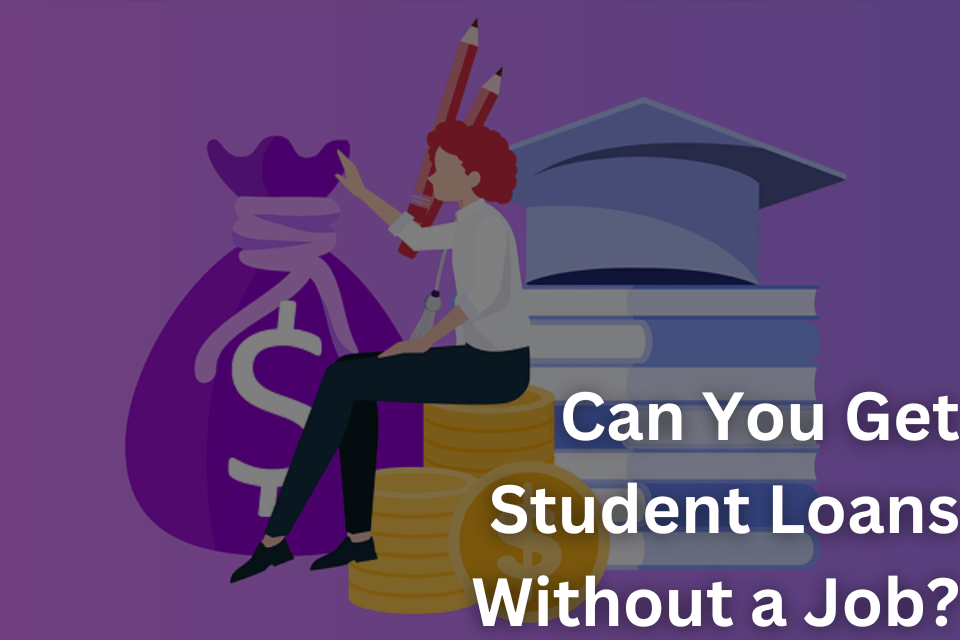Welcome to My Cribsheet’s Ultimate Guide to Student Loans! If you’re on the verge of stepping into the exciting yet challenging world beyond university, understanding the ins and outs of student loans is your first step toward financial empowerment.
Why Student Loans Matter
Did you know that student loan debt has become a significant aspect of many graduates’ lives? As of [current year], [statistics on student loan debt] highlight the pervasive impact of these financial instruments on individuals and the broader economy.
In this comprehensive guide, we’ll break down the complexities of student loans, empowering you to make informed decisions about your financial future. Whether you’re just starting your academic journey or you’ve tossed your cap into the air, we’ve got you covered.
What’s Inside?
This guide is more than a collection of information; it’s your roadmap to understanding, managing, and ultimately conquering student loan debt. Here’s a sneak peek into what awaits you:
- Types of Student Loans: Delve into the world of federal and private loans. We’ll demystify the key differences, helping you choose the right option for your needs.
- Applying for Student Loans: Navigate the FAFSA process with ease and learn how to decipher your financial aid package. Uncover hidden opportunities for grants and scholarships.
- Repayment Plans: From standard to income-driven options, we’ll explore the various repayment plans, ensuring you find one that aligns with your financial goals.
- Loan Forgiveness Programs: Discover programs that can alleviate the burden of student loans for those in public service, education, and income-driven plans.
- Private Student Loan Insights: Get a grip on private loans, understand interest rates, and explore refinancing options for a brighter financial future.
- Managing Debt: Learn practical strategies for budgeting, emergency preparedness, and navigating deferment or forbearance when needed.
- Avoiding Default: Understand the consequences of default and arm yourself with tips to stay on track, even in challenging times.
- Resources and Tools: Access calculators, contact information for loan servicers, and government websites to empower your financial journey.
- Tips for Minimizing Debt: Proactive steps, such as seeking scholarships and working part-time, can significantly impact your overall debt load.
This guide isn’t just about information; it’s about your journey to financial freedom. Let’s embark on this exploration together, equipping you with the knowledge and confidence needed to tackle student loans head-on. Are you ready to take control of your financial future? Let’s dive in!
Types of Student Loans: Navigating the Financial Landscape
Federal Student Loans: Your Foundation for Education
Direct Subsidized Loans
Direct Subsidized Loans are a beacon for students with demonstrated financial need. The government covers the interest while you’re in school, during the grace period, and in deferment.
Tip: If you qualify, consider these loans first to minimize your overall debt burden.
Direct Unsubsidized Loans
Open to a broader range of students, Direct Unsubsidized Loans don’t require demonstrated financial need. While interest accrues during all periods, the flexibility they offer is invaluable.
Tip: If you don’t qualify for subsidized loans, these are a solid alternative.
PLUS Loans (Parent and Graduate)
Parents and graduate students can access PLUS Loans, which cover costs not met by other financial aid. Keep in mind that credit history plays a role, and interest begins accruing immediately.
Tip: Explore PLUS Loans cautiously, understanding the long-term financial implications.
Private Student Loans: Bridging the Financial Gap
While federal loans offer many advantages, private student loans have their place, especially when additional funds are needed.
Key Differences from Federal Loans
Private loans often have higher interest rates and fewer borrower protections. However, they can be more flexible and may cover costs beyond what federal loans offer.
Tip: Exhaust federal options before considering private loans.
Interest Rates and Terms
Private loan interest rates vary based on creditworthiness. Understanding the terms, including repayment schedules and potential variable rates, is crucial for informed decision-making.
Tip: Carefully review and compare terms from different private lenders.
Applying for Student Loans: Navigating the Financial Aid Maze
FAFSA (Free Application for Federal Student Aid)
Completing the Free Application for Federal Student Aid (FAFSA) is your gateway to federal financial assistance. Here’s a step-by-step guide:
Gather Necessary Information
Before diving into the FAFSA, gather essential documents, including tax returns, W-2 forms, and bank statements. Having these at your fingertips streamlines the process.
Create an FSA ID
Your Federal Student Aid (FSA) ID is your electronic signature. Create one at fsaid.ed.gov. Both you and your parent (if dependent) need separate IDs.
Fill Out the FAFSA
Navigate to fafsa.gov and start the application. Provide accurate information about your financial situation. Use the IRS Data Retrieval Tool for precise tax information.
Understand Deadlines
FAFSA deadlines vary by state and institution. Missing deadlines could affect your eligibility for certain aid programs. Be proactive in submitting your application.
Understanding Financial Aid Packages
Once you’ve completed the FAFSA, you’ll receive a financial aid package from your school. Decode it with these insights:
Grants and Scholarships
These are “free money” options that don’t require repayment. They can come from the federal government, state programs, or private institutions.
Tip: Maximize grants and scholarships to reduce reliance on loans.
Work-Study Opportunities
Federal Work-Study provides part-time jobs for students with financial need. It not only helps with expenses but also offers valuable work experience.
Tip: Explore work-study positions related to your field of study.
Federal Student Loan Repayment Plans: Charting Your Financial Course

As you embark on your post-graduation journey, understanding federal student loan repayment plans is crucial. Let’s explore the options available to ensure a manageable and sustainable approach to repaying your loans.
Standard Repayment Plan
The Standard Repayment Plan involves fixed monthly payments over a 10-year period. While this plan generally results in higher monthly payments, it allows you to clear your debt relatively quickly.
Tip: Consider this plan if you can comfortably manage the monthly payments without undue strain.
Graduated Repayment Plan
The Graduated Repayment Plan starts with lower monthly payments that increase every two years. This is ideal if your income is expected to rise over time, providing flexibility in the initial years.
Tip: Graduated plans are suitable for those anticipating an income increase in the future.
Income-Driven Repayment Plans
Income-Driven Repayment (IDR) plans tailor your monthly payments to your income, family size, and federal student loan balance. Here are the main options:
Income-Based Repayment (IBR)
IBR caps your monthly payments at a percentage of your discretionary income. Any remaining balance after 20 or 25 years of qualifying payments may be forgiven.
Tip: IBR is suitable if you anticipate lower income after graduation.
Pay As You Earn (PAYE)
PAYE also caps monthly payments at a percentage of your discretionary income and offers forgiveness after 20 years of qualifying payments.
Tip: PAYE is specifically designed for borrowers with a high debt-to-income ratio.
Revised Pay As You Earn (REPAYE)
REPAYE extends the repayment period to 20 or 25 years for undergraduates and graduates, respectively. It offers forgiveness on the remaining balance after the specified period.
Tip: REPAYE is an inclusive option for all eligible borrowers.
Income-Contingent Repayment (ICR)
ICR calculates payments based on your adjusted gross income, family size, and the total amount of your Direct Loans. Similar to other IDR plans, any remaining balance after 25 years may be forgiven.
Tip: ICR is a versatile option for various financial situations.
Loan Forgiveness Programs
For those committed to public service or specific professions, federal loan forgiveness programs offer a light at the end of the repayment tunnel:
Public Service Loan Forgiveness (PSLF)
PSLF forgives the remaining balance on your Direct Loans after 120 qualifying monthly payments while working full-time for a qualifying employer.
Tip: PSLF is a compelling option for those pursuing careers in public service.
Teacher Loan Forgiveness
Teachers serving in low-income schools may qualify for forgiveness of up to $17,500 on certain federal loans after five consecutive years of teaching.
Tip: Explore Teacher Loan Forgiveness if you’re entering the education field.
Income-Driven Forgiveness
Remaining balances on federal loans after 20 or 25 years of qualifying payments under an IDR plan may be forgiven.
Tip: IDR forgiveness is an option for those who may not qualify for PSLF.
Understanding these repayment plans and forgiveness options empowers you to choose the path that aligns with your financial circumstances and career goals.
Private Student Loans: Navigating the Terrain Beyond Federal Aid
While federal student loans provide a solid foundation for financing education, private student loans can play a pivotal role in bridging financial gaps. Understanding the nuances of private loans is essential for making informed decisions about your education financing.
Key Differences from Federal Loans
Private student loans differ significantly from their federal counterparts, and it’s crucial to be aware of these distinctions:
Interest Rates
Private loans often come with variable interest rates, meaning they can fluctuate based on market conditions or your creditworthiness. Federal loans, in contrast, generally offer fixed interest rates.
Tip: Before opting for a private loan, carefully consider the potential impact of variable interest rates on your long-term repayment.
Repayment Terms and Options
Private loans may have less flexible repayment terms compared to federal loans. It’s essential to review and understand the terms, including the grace period, deferment, and forbearance options.
Tip: Choose a private loan with repayment terms that align with your financial goals and post-graduation plans.
Repayment Options for Private Student Loans
Navigating private student loan repayment involves understanding your lender’s policies and exploring potential avenues for flexibility:
Variable vs. Fixed Interest Rates
Understand the trade-offs between variable and fixed interest rates. While variable rates may start lower, they can increase over time. Fixed rates offer stability but might be initially higher.
Tip: Consider your risk tolerance and financial stability when choosing between variable and fixed rates.
Repayment Terms and Options
Explore repayment options provided by private lenders, including the possibility of making interest-only payments during school or choosing extended repayment terms.
Tip: Opt for a repayment plan that aligns with your financial circumstances and future earning potential.
Loan Consolidation and Refinancing
Consolidation and refinancing can simplify repayment and potentially lower interest rates. However, be aware that consolidating federal loans with private loans forfeits federal loan benefits.
Tip: Evaluate the pros and cons of consolidation and refinancing, considering both short-term and long-term implications.
Understanding the complexities of private student loans empowers you to make informed decisions about your education financing.
Managing Student Loan Debt: Strategies for Financial Success

Now that you’ve acquired a solid understanding of the various types of student loans, repayment plans, and the nuances of private loans, it’s time to delve into effective strategies for managing your student loan debt. Adopting these practices can make a significant difference in your financial journey post-graduation.
Budgeting for Loan Payments
Creating a comprehensive budget is the cornerstone of successful debt management. Consider the following steps:
Track Your Expenses
Document your monthly expenses, including rent, utilities, groceries, and discretionary spending. Understanding where your money goes is the first step to effective budgeting.
Prioritize Loan Payments
Make student loan payments a non-negotiable part of your budget. Allocate a specific portion of your income to loan repayments to ensure consistency.
Emergency Fund
Build an emergency fund to cover unexpected expenses. Having a financial cushion can prevent you from relying on credit cards or accumulating more debt in times of crisis.
Tip: Aim to allocate at least 20% of your income toward debt repayment and savings.
Emergency Preparedness
Life is unpredictable, and unexpected events can impact your financial stability. Prepare for the unexpected by:
Understanding Deferment and Forbearance Options
In times of financial hardship, explore options for deferment or forbearance. These temporarily pause or reduce your loan payments, providing relief during challenging periods.
Insurance Coverage
Consider insurance policies, such as health and disability insurance, to protect yourself from unforeseen medical expenses or the inability to work.
Tip: Regularly review your insurance coverage to ensure it aligns with your current needs.
Deferment and Forbearance Options
When facing financial difficulties, explore deferment or forbearance options to temporarily halt or reduce your loan payments. Understand the eligibility criteria and potential consequences of these choices.
Tip: Communicate with your loan servicer promptly if you anticipate challenges in making payments.
Avoiding Default and Delinquency: Safeguarding Your Financial Future
Understanding the consequences of default and delinquency is paramount to maintaining a healthy financial standing. Proactive measures can help you navigate challenges and avoid these pitfalls. Let’s explore strategies to safeguard your financial well-being.
Understanding the Consequences of Default
Defaulting on your student loans can have severe repercussions, including:
Damage to Credit Score
Default negatively impacts your credit score, making it challenging to secure loans for major life milestones like a car or home purchase.
Collection Activities
Loan default may lead to aggressive collection activities, including wage garnishment and legal action.
Loss of Federal Benefits
Defaulted federal loans result in the loss of crucial benefits, such as deferment, forbearance, and eligibility for income-driven repayment plans.
Tip: Prioritize staying current on your loan payments to avoid the long-term consequences of default.
Tips for Preventing Default
Know Your Options
Understand the various repayment plans, deferment, and forbearance options available for federal loans. Explore these alternatives if you encounter financial challenges.
Open Communication
If you anticipate difficulties in making payments, communicate with your loan servicer promptly. They may offer temporary solutions or guide you to available resources.
Automatic Payments
Consider setting up automatic payments to ensure timely loan repayments. Some lenders offer interest rate reductions as an incentive for enrolling in autopay.
Tip: Establish a strong financial foundation by consistently making on-time payments and staying informed about your loan status.
Options for Borrowers in Default
If you find yourself in default, take immediate action to rectify the situation:
Loan Rehabilitation
Loan rehabilitation involves making a series of consecutive, reasonable, and affordable payments to restore your loan to good standing.
Loan Consolidation
Consolidating your loans may be an option to simplify payments, but be cautious, as it won’t remove the default from your credit history.
Repayment Plans for Defaulted Loans
Explore repayment plans designed for defaulted loans, such as the Income-Driven Repayment plan for defaulted loans (IDR for Defaulted Loans).
Tip: Seek guidance from your loan servicer or a financial counselor to explore the most suitable option for your specific circumstances.
Resources and Tools: Your Toolkit for Financial Empowerment

Equipping yourself with the right resources and tools is essential for navigating the complexities of student loans. Whether you’re in the planning stages, actively repaying loans, or facing financial challenges, this toolkit will empower you to make informed decisions and take control of your financial journey.
Student Loan Calculators
Repayment Estimators
Use federal repayment estimators to calculate potential monthly payments based on different repayment plans. This helps you anticipate and plan for future financial commitments.
Loan Forgiveness Calculators
Explore loan forgiveness calculators to estimate the potential benefits of forgiveness programs, such as Public Service Loan Forgiveness (PSLF) or income-driven forgiveness.
Tip: Regularly revisit these calculators to align your repayment strategy with your current financial situation.
Loan Servicer Contacts
Maintaining open communication with your loan servicer is crucial. Here’s how to reach out:
Federal Student Aid Information Center
Contact the Federal Student Aid Information Center at 1-800-4-FED-AID (1-800-433-3243) for assistance with federal student loans.
Private Loan Lender Contacts
For private student loans, reach out to your lender directly. Find contact information on your loan statements or the lender’s website.
Tip: Save important contact information in your phone and create a dedicated folder for loan-related documents.
Government Websites and Educational Resources
StudentAid.gov
Visit StudentAid.gov for comprehensive information on federal student aid programs, repayment plans, and resources for managing your student loans.
National Student Loan Data System (NSLDS)
Access the NSLDS to track your federal student loan history, including outstanding balances and loan statuses.
Consumer Financial Protection Bureau (CFPB)
Explore the CFPB’s student loan resources for guidance on repayment, dealing with loan servicers, and understanding your rights and responsibilities.
Tip: Stay informed by regularly checking these websites for updates and additional resources.
Tips for Minimizing Student Loan Debt: A Proactive Approach
Taking a proactive approach to minimize student loan debt involves a combination of strategic planning, seeking financial aid alternatives, and making informed decisions. Let’s explore key tips to help you navigate your university journey with financial prudence.
Scholarship and Grant Opportunities
Research Extensively
Explore scholarship and grant opportunities available through your university, private organizations, and government programs. Many scholarships are merit-based, while others consider financial need, extracurricular activities, or specific achievements.
Application Strategies
Apply for multiple scholarships, even if the amounts seem small. The cumulative impact of several awards can significantly reduce your overall financial burden.
Tip: Create a calendar to keep track of application deadlines and requirements for each scholarship.
Part-Time Work and Internships
Work-Study Programs
If eligible, consider participating in federal work-study programs. These provide part-time employment opportunities that align with your course of study.
Internships and Co-ops
Explore internships and co-op programs in your field of study. These experiences not only provide valuable insights into your chosen profession but also contribute to your resume.
Tip: Seek opportunities that offer both financial compensation and relevant work experience.
Smart Borrowing Practices
Borrow Only What You Need
While student loans are a helpful financial tool, only borrow what is necessary for tuition, fees, and essential living expenses. Avoid taking out additional loans for non-essential expenses.
Consider Federal Loans First
Before exploring private loans, exhaust your eligibility for federal loans. Federal loans often offer more favorable terms, including fixed interest rates and income-driven repayment plans.
Tip: Review loan terms carefully and compare options before making borrowing decisions.
Financial Literacy Education
Attend Financial Literacy Workshops
Many universities offer financial literacy workshops to help students understand budgeting, debt management, and the long-term implications of financial decisions.
Seek Guidance from Financial Counselors
Schedule appointments with financial aid counselors or seek guidance from financial advisors. They can provide personalized advice based on your specific situation.
Tip: Take advantage of available resources to enhance your financial literacy and decision-making skills.
Conclusion: Charting Your Path to Financial Freedom
Congratulations on reaching the end of the Ultimate Guide to Student Loans! You’ve embarked on a journey to understand, manage, and conquer the challenges of student loans, and you are now armed with knowledge and insights to navigate the path ahead.
Key Takeaways
- Types of Student Loans: Distinguish between federal and private loans, exploring their unique features and implications.
- Applying for Student Loans: Master the FAFSA process and decode financial aid packages to make informed decisions.
- Federal Student Loan Repayment Plans: Explore various plans tailored to your income and financial goals.
- Private Student Loans: Navigate the nuances of interest rates, terms, and repayment options for private loans.
- Managing Student Loan Debt: Develop a budget, prepare for emergencies, and explore deferment or forbearance options.
- Avoiding Default and Delinquency: Understand the consequences and implement proactive measures to safeguard your financial future.
- Resources and Tools: Utilize calculators, contact loan servicers, and explore government websites for ongoing support.
- Minimizing Student Loan Debt: Proactively seek scholarships, consider work-study opportunities, and make informed borrowing decisions.
Your Journey Continues
As you continue your journey through university and beyond, remember that financial freedom is achievable with careful planning, proactive decision-making, and ongoing education. Here’s a final word of encouragement:
“Your financial journey is uniquely yours. Embrace the knowledge you’ve gained, stay informed about your options, and be proactive in managing your student loans. With dedication and smart choices, you’re charting a course toward a future of financial freedom. You’ve got this!”
We wish you success in your academic pursuits and beyond. If you ever need guidance or support, remember that resources and assistance are available. May your journey be filled with financial empowerment and the fulfillment of your dreams. Safe travels on the road to financial freedom!












